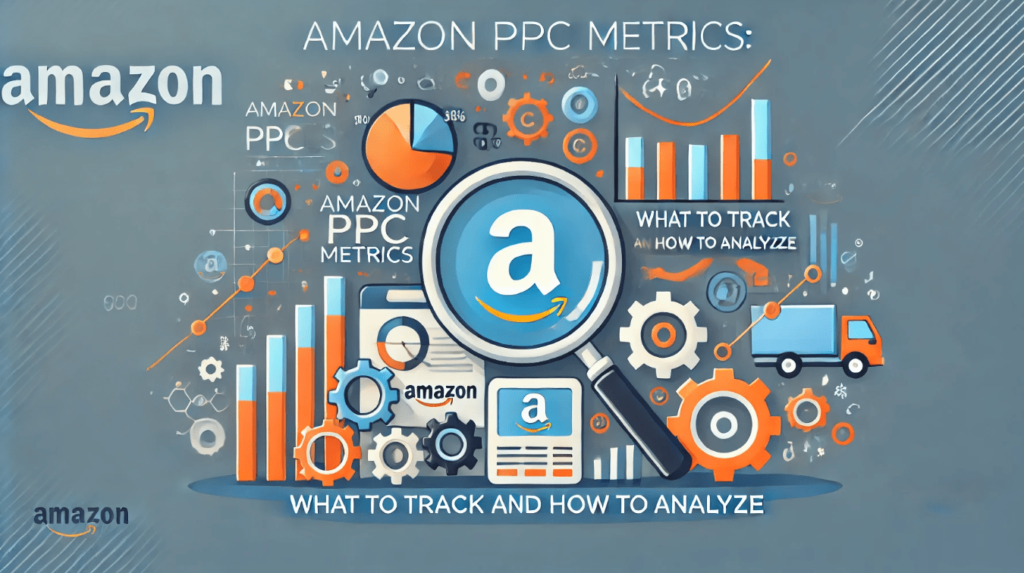In the bustling marketplace of Amazon, advertising is a crucial lever for driving sales and visibility. Amazon’s Pay-Per-Click (PPC) advertising is a powerful tool, but to wield it effectively, you need to understand the metrics that matter. This article will guide you through the key Amazon PPC metrics you should track and how to analyze them to optimize your campaigns.
1. Impressions
What to Track: Impressions indicate how often your ad is shown to shoppers. It’s the first step in the advertising funnel and provides insight into your ad’s reach and visibility.
How to Analyze: High impressions but low clicks might suggest that your ad isn’t compelling enough or that it’s not targeting the right audience. Consider revising your ad copy or adjusting your targeting.
2. Click-Through Rate (CTR)
What to Track: CTR is the ratio of clicks to impressions. It measures how effectively your ad entices users to click on it.
How to Analyze: A low CTR indicates that while your ad is being seen, it’s not engaging enough. Improving your ad’s relevance and attractiveness through better keywords, images, and copy can help boost CTR.
3. Cost Per Click (CPC)
What to Track: CPC is the amount you pay each time someone clicks on your ad. It’s a critical metric for budget management.
How to Analyze: High CPCs can quickly drain your budget. Monitor your bids and compare them with industry standards. Lowering your CPC can often be achieved by refining your targeting and focusing on less competitive keywords.
4. Advertising Cost of Sales (ACoS)
What to Track: ACoS is the ratio of ad spend to sales generated from those ads. It’s a key profitability metric.
How to Analyze: A high ACoS means you’re spending too much to make sales. To lower ACoS, focus on improving your ad targeting, optimizing your product listings, and refining your keyword strategy.
5. Return on Advertising Spend (ROAS)
What to Track: ROAS is the inverse of ACoS and shows how much revenue you earn for every dollar spent on advertising.
How to Analyze: A low ROAS indicates that your ad campaigns aren’t generating enough revenue. To improve ROAS, focus on high-converting keywords and ensure your product pages are optimized for conversion.
6. Conversion Rate
What to Track: Conversion rate is the percentage of clicks that result in a sale. It measures the effectiveness of your product page.
How to Analyze: A low conversion rate suggests that your product page isn’t persuasive enough. Enhance your product descriptions, images, and reviews to improve the conversion rate.
7. Total Advertising Cost of Sales (TACoS)
What to Track: TACoS considers your total sales, both organic and from ads, against your ad spend. It provides a broader view of how ads impact your overall sales.
How to Analyze: A high TACoS indicates that ads are driving most of your sales, potentially at the expense of organic growth. Balance your ad spend with efforts to improve organic ranking.
8. Impression Share
What to Track: Impression share is the percentage of impressions your ads receive compared to the total available impressions for your keywords.
How to Analyze: Low impression share can signal high competition or insufficient bids. Increase your bids or improve your ad quality to capture more impressions.
Analyzing Your Amazon PPC Metrics
Understanding what metrics to track is just the beginning. Here’s how to analyze these metrics to optimize your PPC campaigns effectively.
1. Data Segmentation
Break down your data into meaningful segments such as by keyword, product, or campaign. This allows you to identify specific areas that need improvement.
2. Trend Analysis
Look for trends over time rather than focusing on isolated data points. Trends can help you understand the long-term effectiveness of your strategies.
3. Benchmarking
Compare your metrics against industry benchmarks or historical data to gauge performance. This helps you set realistic goals and identify areas for improvement.
4. A/B Testing
Conduct A/B tests on different elements of your ads, such as copy, images, and keywords. This helps you determine what works best and refine your strategies accordingly.
5. Holistic View
Consider the interplay between different metrics. For example, a high CTR with a low conversion rate might indicate good ad copy but a poor product page. Balancing these metrics can lead to more effective campaigns.
Practical Tips for Optimizing Amazon PPC
1. Keyword Research
Use tools like Amazon’s Keyword Tool, Helium 10, or Jungle Scout to find high-performing keywords. Focus on long-tail keywords that have less competition and higher conversion rates.
2. Negative Keywords
Regularly update your negative keyword list to exclude terms that aren’t converting. This helps in reducing wasted spend and improving overall campaign efficiency.
3. Bid Adjustments
Adjust your bids based on performance data. Increase bids for high-converting keywords and reduce bids for low-performing ones.
4. Ad Placement
Experiment with different ad placements. Sponsored Brands, Sponsored Products, and Sponsored Display ads each have unique benefits. Analyze which placement works best for your products.
5. Product Page Optimization
Ensure your product pages are optimized with high-quality images, compelling descriptions, and positive reviews. A well-optimized product page can significantly boost your conversion rates.
6. Budget Allocation
Allocate your budget strategically across different campaigns. Focus more on campaigns that show better ROI and scale back on underperforming ones.
7. Regular Monitoring
Amazon PPC requires ongoing attention. Regularly monitor your campaigns and make adjustments based on the latest data to stay ahead of the competition.
Conclusion
Amazon PPC advertising is a dynamic and powerful tool for driving sales and visibility on the platform. By tracking and analyzing key metrics such as impressions, CTR, CPC, ACoS, ROAS, and conversion rates, you can gain valuable insights into your campaigns’ performance. Implementing practical strategies like thorough keyword research, effective bid management, and continuous optimization of your product pages will help you maximize your return on investment. Stay vigilant, keep testing, and refine your approach to ensure long-term success in the competitive Amazon marketplace.

